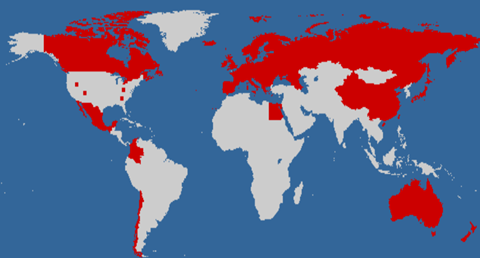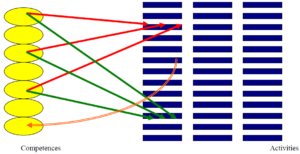About CEFR
From Chile to China, EFL teachers and students are now working with the CEFR – (Common European Framework of Reference) for teaching, learning and assessing foreign languages.

[wptab name=”CEFR-Main Goals”]
The Common European Framework of Reference has 3 central components or ‘building blocks’:
- Can-do statements
- Language activities
- Communicative competences
These components provide the means to achieve the following goals:
Communicative effectiveness
- to enable language learners to communicate more effectively.
- to create a plurilingual society in which language is used for better communication and collaboration between speakers of different language backgrounds (Council of Europe, 2002).
This emphasis on communicative effectiveness drives the types of activities, strategies and competences which teachers and students can choose to focus on.
‘Common language’ for describing objectives, methods and assessment
- to provide a ‘common language’ for describing objectives, methods and assessment which applies to all languages in Europe.
- to facilitate comparison of language learners’ levels.
- to facilitate mutual recognition and co-operation among educational institutions in different countries.
What are the CEFR’s central components or ‘building blocks’?
- Can-do statements
- Language activities
- Communicative competences
[/wptab]
[wptab name=”Descriptive, not Prescriptive”]
The CEFR is an internationally recognized framework that provides a set of guidelines and principles – it is not a curriculum or a syllabus that spells out exactly what to do in the classroom.
The framework describes what learners can do in terms of speaking, reading, listening, writing and interacting with others at six proficiency bands or levels. These levels range from A1 (Beginners) to C2 (Mastery) in 4 different contexts or domains.
[/wptab]
[wptab name=”Domains”]
Language activities are contextualized within 4 domains:
|
Domain |
What does this cover? |
| Public | Everything connected to ordinary social interaction (business, administration, public services, cultural and leisure activities, the media etc.) |
| Personal | Complements public domain – family relations and individual social practices. |
| Occupational | Everything related to a person’s occupation and workplace. |
| Educational | Learning/training contexts (usually related to an institution). where the aim is to acquire specific knowledge or skills. |
[/wptab]
[wptab name=”Can-Do Statements”]
- Can-Do Statements
The CEFR provides a set of statements that describe what learners can typically do in a language at each CEFR level. These descriptors for EFL were developed by University of Cambridge and other internationally recognized researchers who worked together with the British Council and other leading EFL experts.
[/wptab]
[wptab name=”Language Activities”]
2. Language Activities
CEFR defines language activities as what a learner is “able to do with a language” (CEFR p. 43).
Six types of language activities include:
1. Reception / written – reading comprehension
2. Reception / spoken – listening comprehension – TV, TED talks, lectures.
3. Production / written – reports, essays, creative writing
4. Production / spoken – prepared presentations
5. Interaction / written – at least 2 people participate in a written exchange – emails, electronic forums
6. Interaction / spoken – everyday conversations, class discussions, videoconference calls.
[/wptab]
[wptab name=”Communicative Competences”]
3. Communicative Competences
These are sets of knowledge, aptitudes, skills and attitudes, which contribute in different ways to the learners’ ability to communicate.
Three key sets of communicative competences include:
i. Linguistic Competence
ii. Socio-linguistic Competence
iii. Pragmatic Competence
i. Linguistic Competence
Knowledge of language as a system – lexis, phonology, syntax and grammar.
ii. Sociolinguistic Competence
This refers to sociocultural conditions of language use – sensitivity to norms and customs that affect communication and relate to the awareness of social conventions (e.g., rules of politeness).
iii. Pragmatic Competence
This relates to the functional use of linguistic resources (e.g. scenarios or predetermined scripts of interactional exchanges) as well as the mastery of discourse, cohesion and coherence, the identification of text types and forms.
How are all these components connected?
‘Practice makes Perfect’: Relationship between language activities and communicative competences:
According to the CEFR, the relationship between language activities and communicative competences is cyclic: Learners use a range of “toolboxes” or communicative competences to carry out the above six types of language activities.
Performing these 6 types of activities then strengthens the key competences.

[/wptab]
[end_wptabset]
